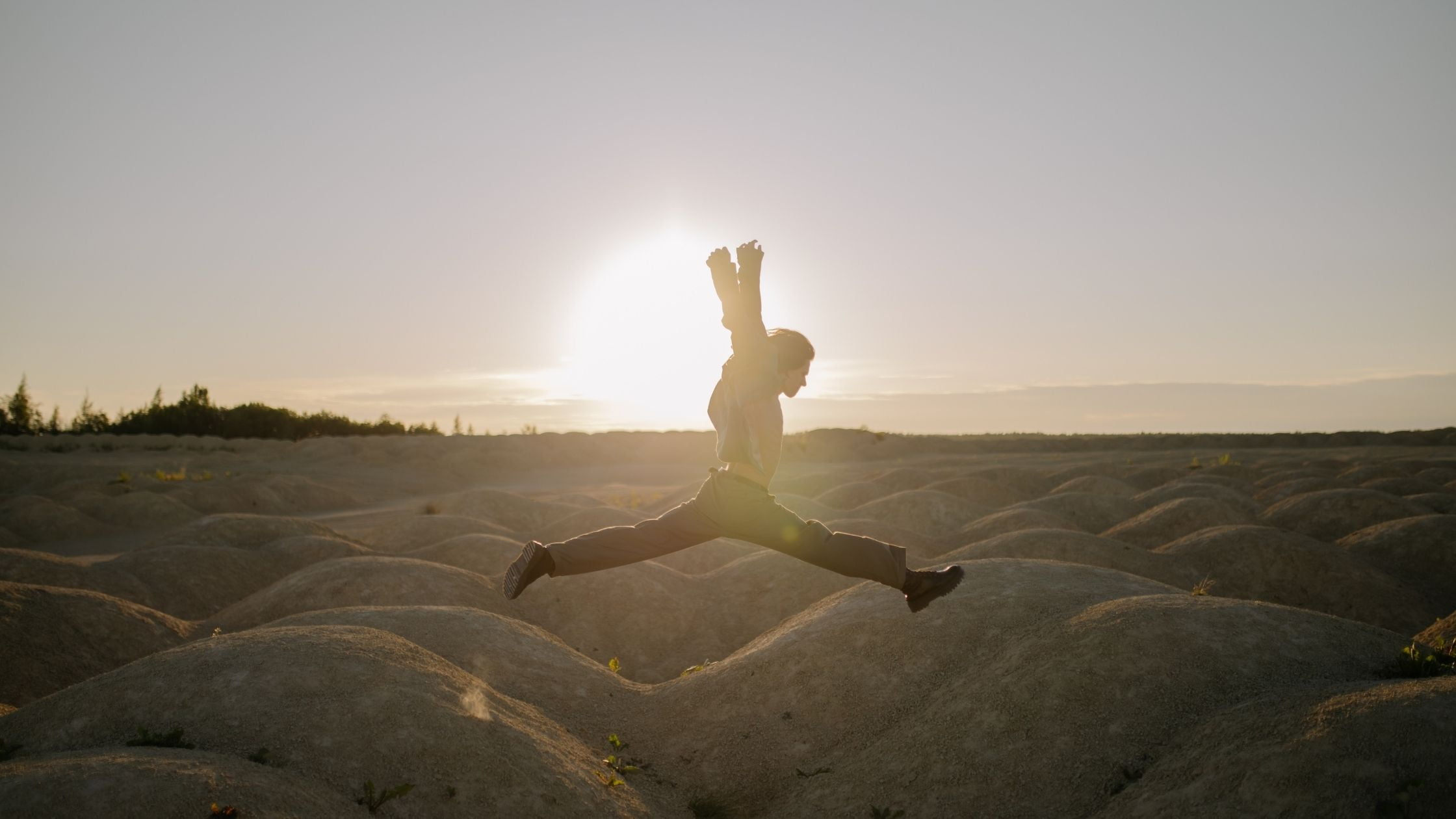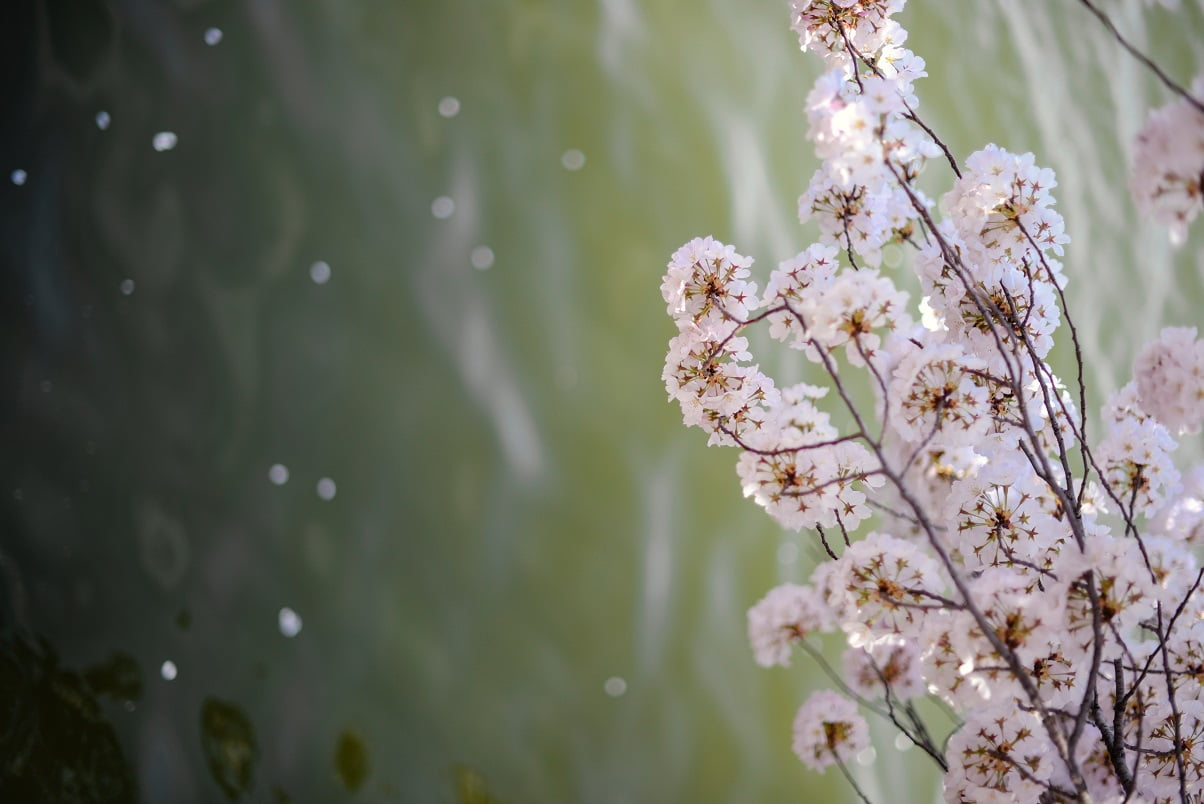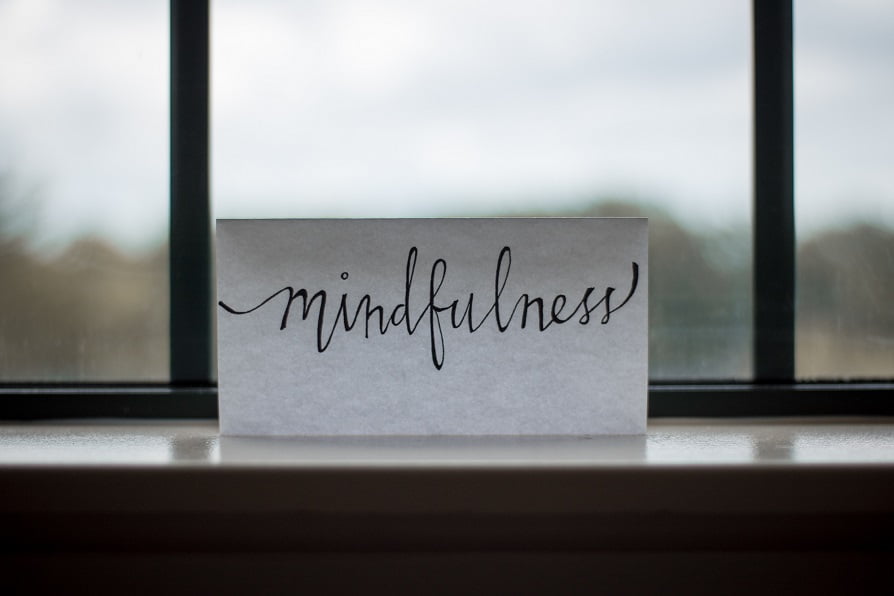
AMBROSE BIERCE “I THINK THAT I THINK, THEREFORE I THINK THAT I AM”
Do you know what your next thought will be? If you were in control would your mind criticize and judge you mercilessly like it does? Our minds are meaning making machines. It compares all experience against our unique belief system about who we believe we are. Does it agree or not? It judges everything and then comes up with a new story of self for the moment. This happens autonomously, automatically and subconsciously. We become aware of what our minds have made up and believe we were the ones who consciously thought it. In fact, we are just knowing what our minds have already created and take ownership of it. Our minds have a mind of their own. Free will? I am not so sure!
by Dr. Phil Blustein

MINDFULNESS IS NOT FREEDOM FROM PAIN AND SUFFERING BUT FREEDOM TO BE WITH PAIN SUFFERING
There are only two ways to be free of pain and suffering. Death and coma. And that is not what mindfulness is about. Mindfulness is not about a silent and peaceful mind. Loss of a loved one, your job, a relationship or your health is difficult. There will be sadness, grief, anger and pain. Mindfulness will not change that. But what it can do is to allow you to hold your pain without fighting and resistance. One holds the suffering with wisdom and compassion.
Dr. Philip Blustein

THE ABCDE OF BREATHING
Learning how to breathe properly is one of the most effective tools you have for stress relief. How do you do it?
AWARENESS!
Our breath is under automatic and conscious control. Bring your awareness to your breath.
BREATHE CALMLY
Breathe in a conscious slow, deep and smooth manner through your nose.
DIAPHRAGMATIC BREATHING
Belly rather than chest breathing with the inhalation and exhalation supports relaxation.
EXHALATION
Exhalation is the parasympathetic or relaxation response while inhalation is the sympathetic or fight or flight response. Breathe out by at least 1 second longer than what you breathe in. Ultimately aim for slow breathing with an in-breath for a count of 4 and an out-breath for a count of 6. Put them all together and you have the capacity to put out the fire of acute stress or lower the simmer of chronic anxiety.
Dr. Philip Blustein

WHAT IS NON-JUDGMENT?
From an interview with Jon Kabat-Zinn in MINDFUL magazine he explained: “And nonjudgmental, by the way, does not mean that you won’t have any likes or dislikes or that you’ll be completely neutral about everything. Nonjudgmental really means that you’ll become aware of how judgmental you are and then not judge that and see if you [can let go], for a few moments at least, the restraining order that filters everything through our likes and dislikes or wants or aversion.”
IS NON-JUDGMENTAL HAVING NO PREFERENCE
FOR YOUR PREFERENCE TO HAVE NO PREFERENCES?
by Dr. Phil Blustein

PAIN IS EXPECTED SUFFERING IS OPTIONAL
I lose my keys.
There is the pain of having to get someone to come and pick me up and go and get another key made. However, I don’t stop there. I add to this pain with my mind saying: “I am so stupid and careless! How could I have lost my keys? This is terrible!”
The Buddha said: “PAIN IS EXPECTED SUFFERING IS OPTIONAL.” There is the initial event that causes us pain. However, we then like to amplify what has happened. We make up stories about our experiences and our self-worth. Value is not inherent to what we experience, but from what we interpret it to be.
Suffering does not come from the event but what we superimpose on it.

Your mind has a mind of its own
If you have ever tried to meditate, you will notice how crazy your mind is; How many thoughts and distractions you have.
Following the S’s of meditation may help your AIM TO SUSTAIN focus.
- SET the intention. It may be: “May I have sustained awareness of the breath.
- SHUT your eyes. This helps to shut out external distractions.
- SPINE for position. Have an upright spine, feet flat on the floor, hands on your lap and your buttocks higher than your knees.
- SCAN the body. Ground yourself in the present moment by bringing attention to the sensations of your body.
- SPOT to focus your awareness of the breath. The tip of the nostrils is a very sensitive spot for attention.
- SENSATIONS – Be aware of the physical sensations of the breath at the tip of the nostrils.
- SPONTANEOUS breathing. Allow the breath to move spontaneously.
- SEGMENTS of the breath. Follow segments of the breath individually. Inhalation, Pause, Exhalation and Pause
- SWITCHING of attention. Attention works by being FOCUSED on the breath, MONITORING when you have drifted and RECENTERING the attention back to the breath.
- SECONDS – Count your breaths to help your focus.
Dr. Phil Blustein
Breathe In & Open

Try this now: Breathe in and open. As you reach the top of the in-breath, feel into your natural friendliness. As you breathe out, let go of any tension or stress. Feel the moment of peace. Mindfulness meditation leads to a peace and ease that is you can’t disturb, no matter what life brings. DR. LESLIE ELLESTAD
Read moreMeditation has been around for thousands of years. The Buddha helped to formalize the mindfulness practice. Meditation has been a part of every main religion. However the practice of meditation is really a secular practice. One does not need to join a religion or cult to practice it. In reality meditation is an exploration of our mind. It is exploring the true nature of reality. How do we create what we believe? What is its truth? What is our relationship to it? There is no woo woo about this!
– Phil Blustein
IS FAITH HELPFUL IN MEDITATION?
I have never been a faith based person. However there was something about meditation that created a faith that what I was doing was beneficial. This was a practice that has been around for thousands of years. I could not imagine that if it wasn’t helpful that it would continue to be so popular. The other key component of faith was observing personal change in myself from mediation that says this works!
– Phil Blustein
WHY IS THE BREATH SUCH A GOOD OBJECT TO USE AS AN ANCHOR FOR MEDITATION?
The breath is a great object to start to practice meditation. It is an external object that we don’t intentionally create when we are open to its natural movement. It is always present and available. No one breath is the same as another breath. Every inhalation and exhalation comes to an end. We don’t tend to personalize a breath and call it our own. In examining the breath we are able to see the true nature of reality. It is always changing and impermanent. Can we also develop the same self-less awareness of the breath for every other object that comes in to our awareness?
– Phil Blustein

WHAT IS MINDFULNESS?
Mindfulness is a unique way of how one relates to each moment. Normally we operate like robots controlled by unconscious habitual patterns. These come predominantly from conditioning from our parents and society. We want to feel loved and safe. We primarily function from the drive to grab onto something that we want or push away what we don’t like. Mindfulness cultivates being present in each moment with awareness, acceptance, non-clinging and non-attachment.

Attitude
We are always trying so hard to get it right! We start off meditating with a goal in mind. I am going to maintain a fixed concentration on the breath. I am going to get this right! I will develop a constant awareness of the breath that will never waver. There is such striving in our practice. Meditation is all about making an effort without striving for an outcome. One is just trying to bring awareness to the present moment in a concentrated fashion. It is about ALLOWING what will happen to unfold as a consequence of your practice without expectation of outcome.
– Phil Blustein

WHAT IS THE BEST TYPE OF MEDITATION?
There is no best type of meditation. A form of meditation may resonate better with you than another one.
Individual choice is important. Starting off with focused awareness theoretically may be the best way to start as it is an initial way to create stability of the mind. The breath is always available to focus on. In open monitoring the multiple changing objects may be difficult initially to bring awareness and concentration to. For some individuals it may be better to start with focused awareness and create some stability of the mind. Then shift to open monitoring.
– Phil Blustein

Types of Meditation
One hears about TM or transcendental meditation, Insight meditation, Metta or loving kindness meditation, Zen meditation, Yogic meditation etc. There are so many choices. How does one figure this out? It may be easier to look at how the meditation is done rather than what it is.
There are 2 main types of meditation. Focused awareness and open monitoring. In focused awareness there isconcentration on one object. One could choose the breath, a saying, sound, body sensation, silence or visualization. No breath, body sensation, sound etc. remains the same. We are bringing our attention to one object that is constantly changing.
In open monitoring whatever object is dominant in one’s awareness is what one brings the attention to. It could be the breath, a sound, thought etc. We are bringing our attention to constantly changing objects. Ultimately the main purpose is to develop awareness of the present moment.
– Phil Blustein

Why Meditate?
Why meditate? Is it to reach an altered state? Transcend the ego? Find enlightenment? I hate to tell you but the purpose of meditation is to simply develop awareness of the present moment. In focused concentration meditation we are developing awareness of the breath. As we develop concentration amazing things happen in our brain. MRI scans have shown that there is an increased activity of the prefrontal cortex, the executive function of the brain and decreased activity of the amygdala, the fear centre of the brain. As we practice we develop more emotional and cognitive regulation, calmness, better coping skills and less self referencing. What I have personally discovered is that the practice does you. I started off to meditate to relieve stress and over the years I have been given the gift of greater calmness, loving kindness, compassion and equanimity. I never intentionally started out to obtain these qualities. Meditate and be open to the unknown possibilities that may develop.
– Phil Blustein
More Mindful Musing
AMBROSE BIERCE “I THINK THAT I THINK, THEREFORE I THINK THAT I AM”
Do you know what your next thought will be? If you were in control would your mind criticize and judge you mercilessly like it does? Our minds are meaning making machines. It compares all experience against our unique belief system about who we believe we are. Does it...
MINDFULNESS IS NOT FREEDOM FROM PAIN AND SUFFERING BUT FREEDOM TO BE WITH PAIN SUFFERING
There are only two ways to be free of pain and suffering. Death and coma. And that is not what mindfulness is about. Mindfulness is not about a silent and peaceful mind. Loss of a loved one, your job, a relationship or your health is difficult. There will be sadness,...
THE ABCDE OF BREATHING
Learning how to breathe properly is one of the most effective tools you have for stress relief. How do you do it? AWARENESS! Our breath is under automatic and conscious control. Bring your awareness to your breath. BREATHE CALMLY Breathe in a conscious slow, deep and...
WHAT IS NON-JUDGMENT?
From an interview with Jon Kabat-Zinn in MINDFUL magazine he explained: “And nonjudgmental, by the way, does not mean that you won’t have any likes or dislikes or that you’ll be completely neutral about everything. Nonjudgmental really means that you’ll become...
PAIN IS EXPECTED SUFFERING IS OPTIONAL
I lose my keys. There is the pain of having to get someone to come and pick me up and go and get another key made. However, I don’t stop there. I add to this pain with my mind saying: “I am so stupid and careless! How could I have lost my keys? This is terrible!” The...
Your mind has a mind of its own
Following the S’s of meditation may help your AIM TO SUSTAIN focus.
Breathe In & Open
Try this now: Breathe in and open. As you reach the top of the in-breath, feel into your natural friendliness. As you breathe out, let go of any tension or stress. Feel the moment of peace. Mindfulness meditation leads to a peace and ease that is you can’t...
Read moreMeditation has been around for thousands of years. The Buddha helped to formalize the mindfulness practice. Meditation has been a part of every main religion. However the practice of meditation is really a secular practice. One does not need to join a religion or cult to practice it. In reality meditation is an exploration of our mind. It is exploring the true nature of reality. How do we create what we believe? What is its truth? What is our relationship to it? There is no woo woo about this!
– Phil Blustein
IS FAITH HELPFUL IN MEDITATION?
I have never been a faith based person. However there was something about meditation that created a faith that what I was doing was beneficial. This was a practice that has been around for thousands of years. I could not imagine that if it wasn’t helpful that it would...
WHY IS THE BREATH SUCH A GOOD OBJECT TO USE AS AN ANCHOR FOR MEDITATION?
The breath is a great object to start to practice meditation. It is an external object that we don’t intentionally create when we are open to its natural movement. It is always present and available. No one breath is the same as another breath. Every inhalation and...
WHAT IS MINDFULNESS?
Mindfulness is a unique way of how one relates to each moment. Normally we operate like robots controlled by unconscious habitual patterns. These come predominantly from conditioning from our parents and society. We want to feel loved and safe. We primarily function...
Attitude
We are always trying so hard to get it right! We start off meditating with a goal in mind. I am going to maintain a fixed concentration on the breath. I am going to get this right! I will develop a constant awareness of the breath that will never waver. There is such...
WHAT IS THE BEST TYPE OF MEDITATION?
There is no best type of meditation. A form of meditation may resonate better with you than another one. Individual choice is important. Starting off with focused awareness theoretically may be the best way to start as it is an initial way to create stability of the...
Types of Meditation
One hears about TM or transcendental meditation, Insight meditation, Metta or loving kindness meditation, Zen meditation, Yogic meditation etc. There are so many choices. How does one figure this out? It may be easier to look at how the meditation is done rather than...
Why Meditate?
Why meditate? Is it to reach an altered state? Transcend the ego? Find enlightenment? I hate to tell you but the purpose of meditation is to simply develop awareness of the present moment. In focused concentration meditation we are developing awareness of the breath....